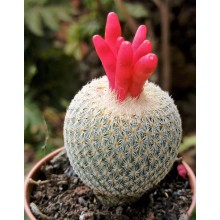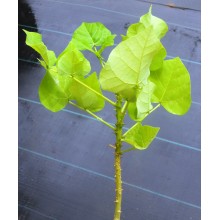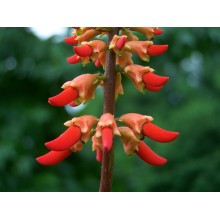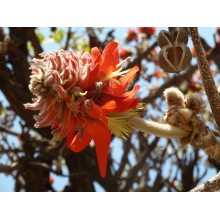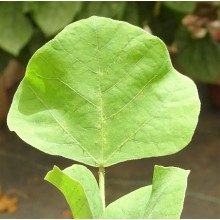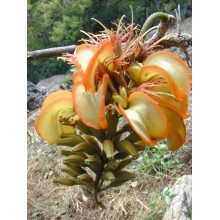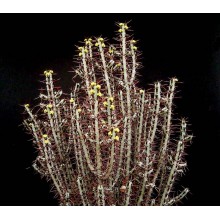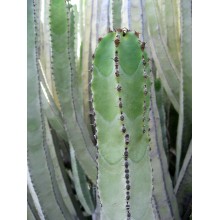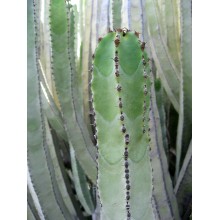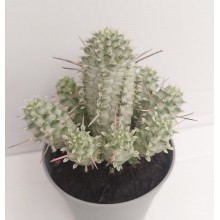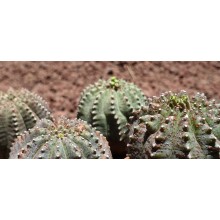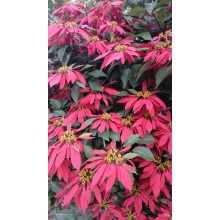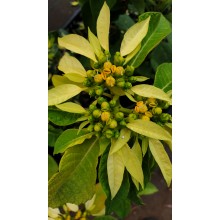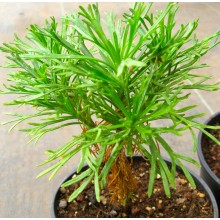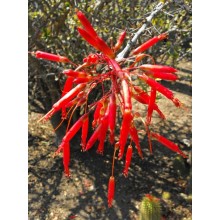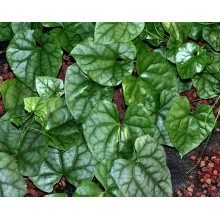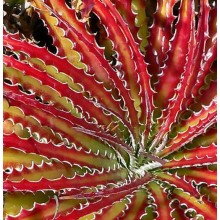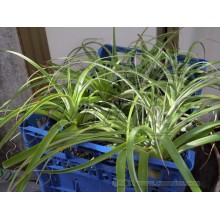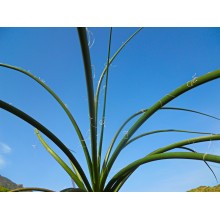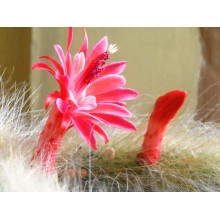Altre succulente Ci sono 204 prodotti.

Qui troverete tutte quelle specie di piante del deserto che non sono inclusi nella propria categoria. Metteremo qui tutte le piante provenienti da famiglie inusuali, diversi da Agavi, Aloe, Crassulaceae, Sansevieria, Mesembriantemi, Epiphytic cacti, etc.
-
Epitelantha micromeris
Epitelantha micromeris
Very ornamental small cactus from the SW USA and Mexico, coated with white unharmful spines. It blooms in late winter with pale pink flowers that are soon followed by some very attractive frutis, which are dark pink, glossy and last form months!
10,80 € -
Erythrina caffra
Erythrina caffra
1-2 year old seedling. This "Dwarf Coral Tree" is native to Natal, in South Africa. It is a densely branched deciduous shrub, with scarlet flowers on black flower stalks, standing above the foliage during a long time. It is suited to mediterranean climates and takes light frosts.
32,50 € -
Erythrina humeana
Erythrina humeana
Dwarf Coral Tree is native to Natal, in South Africa. It is a densely branched deciduous shrub, with scarlet flowers on black flower stalks, standing above the foliage during a long time. It is suited to mediterranean climates and takes light frosts.
38,80 € -
Erythrina latissima
Erythrina latissima
Small tree from dry South Africa with unusually thick branches and unsually wide trifoliate leaves. These are gorgeous, velvety, with a few spines. It is very ornamental. It starts its life with a caudex and can stay in a pot for eons, keeping a nice caudex with very short shoots. Inforescences show the fabulous classic erythrina-red colour and flowers...
38,50 € -
Erythrina melanacantha
Erythrina melanacantha
Tree 4-20 m tall, with corky bark and hooked spines on the branches. The flowers have the beautiful red so typical of the genus Erythrina.
58,30 € -
Erythrina sandwicensis
Erythrina sandwicensis
Wili-wili, or Erythrina sandwicensis is endemic to the dry side of the Hawaiian Islands. It is almost a succulent plant, as it often grows on dry lava rock, with a thick trunk. Flower colours range through different hues and each specimen is different: they can be Green to Yellow to different types of Orange.
38,00 € -
Euphorbia aeruginosa
Euphorbia aeruginosa
Very ornamental, compact shrubby cactiform Euphorbia from South Africa,with blue-grey-green stems and rusty red spines. Bright yellow flowers are nice too.
11,20 € -
Euphorbia canariensis
Euphorbia canariensis
Endemic succulent from Canary Islands, widespread on the drier and rocky areas of the archipelago.
32,50 € -
Euphorbia canariensis - Large
Euphorbia canariensis - Large
Endemic succulent from Canary Islands, widespread on the drier and rocky areas of the archipelago.
84,00 € -
Euphorbia obesa
Euphorbia obesa
This is an old classic for succulent collectors, but still everybody needs a new one. The obese euphorbia is native to the Cape Province of South Africa. It is very elegant and very resistant to neglect. They live for many years at a very slow pace.
11,20 € -
Euphorbia pulcherrima 'Tall Wild Type'
Euphorbia pulcherrima 'Tall Wild Type'
This is the most classic tall heirloom poinsettia which is so widespread in the old gardens of the Canary Islands and the Southern Mediterranean.
24,50 € -
Euphorbia pulcherrima 'Tall Wild Type' YELLOW
Euphorbia pulcherrima 'Tall Wild Type' YELLOW
This is the most classic tall heirloom poinsettia which is so widespread in the old gardens of the Canary Islands and the Southern Mediterranean.
24,50 € -
Euryops socotranus
Euryops socotranus
Rarely cultivated shrub endemic to the island of Socotra. It grows in rocky harsh areas and it is especially abundant at about 1000 m elevation. It is closely related to Euryops arabicus and thrives in coastal Mediterranean conditions. It is suited to pot culture and also makes a nice garden subject for dry sunny areas.
27,50 € -
Fouquieria macdougalii
Fouquieria macdougalii
Succulent shrub from Sonora in Mexico, with arching branches and showy orange-red blooming. It grows well in cultivation and when co nstrained in a pot, it forms a nice short shrub with a caudex and will also bloom.
38,40 € -
Hechtia texensis
Hechtia texensis
A small, colourful frost-hardy terrestrial bromeliad. A gem for collectors!
28,20 € -
Hechtia tillandsioides
Hechtia tillandsioides
This is an unusual and elegant terrestrial bromeliad with spineless silvery leaves. Leaves are soft and velvety to touch. Established plants will bloom with huge "sprays" of pink flowers. Hechtia tillandsioides is native to Mexico (States of Hidalgo and Mexico). It takes frost and feels at home in Mediterranean climates !
21,50 € -
Hesperaloe parviflora
Hesperaloe parviflora
Leaves are decorated by showy white, curly fibres on the margins. It clumps slowly and Long-lasting tall, red inflorescences appear in summer. Hardy to all types of conditions and it can take drought, and frost to about -20 C !
15,00 € -
Hildewintera colademononis
Hildewintera colademononis
Beautiful cactus from the Andes with hanging stems. They are "hairy", coated with a grey fur. Flowers are a show indeed! Cola de Mono means Monkey Tail and this is because each stem looks like the hanging tail of a hidden monkey! It is a high-elevation species and it is cool-growing and frost-tolerant.
13,50 €
Al momento ci sono pochi prodotti in questa categoria Altre succulente
















